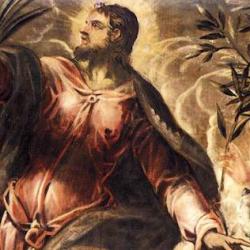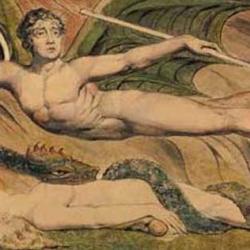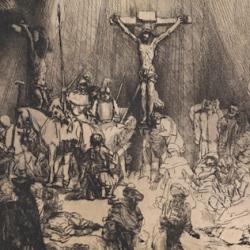Jenson admits in an essay on atonement in Theology as Revisionary Metaphysics that no single theory of atonement has won consensus. Some, he writes, “make a virtue of this proliferation of proposals and the absence of form or informal consensus around any one of them; others see in it a historical failure and a challenge to do better. I am among the latter, which may be unwise, but there I am” (128).
One popular option for dealing with the variety of theories is to put forward “‘images’ of what happened on the cross . . . and indeed the more such images are heaped around the cross the better.” “Images,” Jenson observes, has become a standard term for “referring to doctrines of the atonement.”
Jenson admits to getting “nervous” when “someone says that something is too mysterious to talk about with concepts.” It’s not that he opposes images: “images have their own grip on reality and are indispensable” but he finds it problematic to think we can do with images and dispense with concepts.
As he argues: “True ‘mysteries’ in the biblical use of the notion indeed often break our concepts and may even confront us with truth whose conceptual description obeys Godel’s maxim that truth cannot be proved, but mysteries in the biblical sense do not reduce to exclusive reliance on images. Thus, the Incarnation is indeed a mysterion, in that it is in itself an irreducible contingency, transforms other reality, and is to be known only if God reveals it – and I have just recited three perfectly conceptual and coherent things theology has said about it.”
The cross is a mystery in precisely this sense, but this “by no means excuses us from clear conceptual discourse about it and abut its mysterious character.”
As Jenson would say, Quite so.















